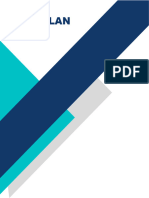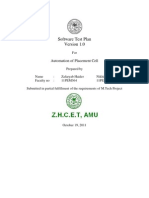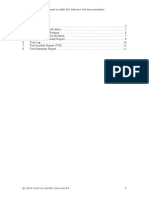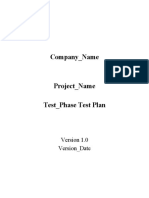0% found this document useful (0 votes)
14 views1 pageCompact Feature Test Plan Structure
The document outlines a compact feature test plan structure, detailing sections such as ID & Title, Objective, Scope, and Strategy. It specifies the testing approach, resources needed, deliverables, and criteria for entry and exit, along with potential risks and required approvals. The plan emphasizes a combination of manual and automated testing using specific tools and includes a timeline for execution.
Uploaded by
olha.dymaretskaCopyright
© © All Rights Reserved
We take content rights seriously. If you suspect this is your content, claim it here.
Available Formats
Download as DOCX, PDF, TXT or read online on Scribd
0% found this document useful (0 votes)
14 views1 pageCompact Feature Test Plan Structure
The document outlines a compact feature test plan structure, detailing sections such as ID & Title, Objective, Scope, and Strategy. It specifies the testing approach, resources needed, deliverables, and criteria for entry and exit, along with potential risks and required approvals. The plan emphasizes a combination of manual and automated testing using specific tools and includes a timeline for execution.
Uploaded by
olha.dymaretskaCopyright
© © All Rights Reserved
We take content rights seriously. If you suspect this is your content, claim it here.
Available Formats
Download as DOCX, PDF, TXT or read online on Scribd
/ 1



















































